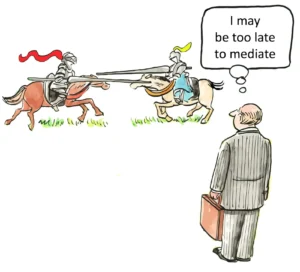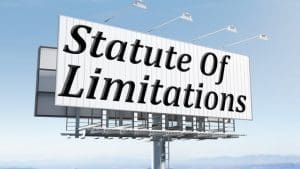Inventor’s Roadmap: How to Patent Your Invention Successfully
The process of patenting an invention is a crucial step for innovators seeking to protect their intellectual property and secure exclusive rights to their creations. This comprehensive guide will navigate inventors through the intricate journey of patent registration, providing essential insights and strategies to successfully secure patent protection for their inventions.
Patent protection serves as a powerful tool for inventors, granting them a temporary monopoly over their innovations and preventing others from making, using, or selling their inventions without permission. The path to obtaining a patent, however, can be complex and demanding, requiring careful planning, thorough research, and meticulous execution.
To embark on this journey, inventors must first understand the fundamental requirements for patent eligibility. An invention must be novel, non-obvious, and useful to qualify for patent protection. Novelty implies that the invention is new and has not been previously disclosed to the public. Non-obviousness means that the invention would not be obvious to a person skilled in the relevant field. Usefulness requires that the invention serves a practical purpose or provides a tangible benefit.
The patent application process begins with a comprehensive patent search to determine if similar inventions already exist. This crucial step helps inventors assess the novelty of their creation and identify potential obstacles in the patenting process. Conducting a thorough search can save time, money, and effort by revealing existing patents or published applications that may impact the patentability of the invention.
Once the patent search is complete and the invention is deemed potentially patentable, inventors must decide on the type of patent application to file. The United States Patent and Trademark Office (USPTO) offers several options, including utility patents, design patents, and plant patents. Utility patents, the most common type, protect the functional aspects of an invention, while design patents safeguard the ornamental features of a product.
The next crucial step is preparing a comprehensive patent application. This document serves as the foundation for the legal protection of the invention and requires careful drafting. A well-prepared application includes a detailed description of the invention, precise claims defining the scope of protection sought, and clear drawings or diagrams illustrating the invention’s key features.
Inventors must also consider the geographic scope of their patent protection. While a U.S. patent provides protection within the United States, inventors may need to file international patent applications to secure rights in other countries. The Patent Cooperation Treaty (PCT) offers a streamlined process for seeking patent protection in multiple countries simultaneously.
After filing the patent application, inventors enter the examination phase, where a patent examiner reviews the application to determine if it meets the requirements for patentability. This process often involves back-and-forth communication between the inventor (or their patent attorney) and the examiner, addressing any objections or rejections raised during the examination.
Successfully navigating the patent examination process requires persistence, attention to detail, and often the expertise of a patent attorney. Responding effectively to office actions, amending claims when necessary, and presenting compelling arguments to overcome rejections are critical skills in securing patent approval.
Once a patent is granted, inventors must maintain their patent rights by paying maintenance fees and enforcing their patent against potential infringers. Effective patent management and strategic enforcement can maximize the value of the patent and protect the inventor’s market position.
Throughout the patenting process, inventors should be aware of emerging trends and developments in patent law. The rise of artificial intelligence (AI) and machine learning technologies has introduced new challenges and opportunities in the patent landscape. Questions surrounding AI-generated inventions and their patentability are at the forefront of legal discussions, shaping the future of intellectual property protection.
Another significant trend is the increasing focus on sustainability and green technologies. Patent offices worldwide are prioritizing applications related to environmental solutions, offering expedited examination processes for inventions that address climate change and promote sustainable development.
The intersection of patents and standardization is also gaining prominence, particularly in the telecommunications and technology sectors. Standard-essential patents (SEPs) play a crucial role in the development and adoption of industry standards, raising complex issues of licensing and fair, reasonable, and non-discriminatory (FRAND) terms.
As the global economy becomes increasingly knowledge-based, the value of intellectual property continues to grow. Patents serve not only as defensive tools but also as strategic assets that can drive innovation, attract investment, and create competitive advantages. Understanding the nuances of patent valuation and leveraging patents for business growth are becoming essential skills for inventors and entrepreneurs alike.
The patent system itself is evolving to meet the challenges of the 21st century. Patent offices are adopting new technologies to improve the efficiency and quality of patent examination. Machine learning algorithms are being employed to assist in prior art searches, while blockchain technology is being explored for secure and transparent record-keeping of patent rights.
In recent years, there has been a growing emphasis on patent quality over quantity. Patent offices are implementing stricter examination standards to ensure that granted patents represent genuine innovations rather than incremental improvements. This shift underscores the importance of thorough preparation and robust argumentation in the patent application process.
The rise of open innovation and collaborative research models has also impacted the patent landscape. Inventors and companies are increasingly exploring patent pools, cross-licensing agreements, and other collaborative mechanisms to navigate complex technology ecosystems and foster innovation while respecting intellectual property rights.
For inventors in specific fields, such as biotechnology and pharmaceuticals, navigating the patent system presents unique challenges. The interplay between patent protection and regulatory approval processes, such as those overseen by the Food and Drug Administration (FDA), requires careful strategic planning to maximize the effective patent life of new drugs and medical devices.
In the software and technology sectors, the patentability of computer-implemented inventions remains a contentious issue. Inventors in these fields must carefully craft their patent applications to emphasize the technical nature of their innovations and overcome potential subject matter eligibility challenges.
The global nature of innovation and commerce has led to increased efforts towards patent harmonization across different jurisdictions. Initiatives like the Patent Prosecution Highway (PPH) aim to accelerate patent examination by allowing patent offices to share information and leverage each other’s work, potentially reducing costs and time for inventors seeking multi-national patent protection.
As inventors navigate the patent system, they must also be mindful of potential pitfalls and ethical considerations. Patent trolls, entities that acquire patents solely for the purpose of extracting licensing fees or litigation settlements, have become a significant concern in the intellectual property landscape. Inventors should be prepared to defend their patents against frivolous claims while also ensuring their own patent strategies are ethically sound and promote genuine innovation.
The concept of prior user rights has gained importance in many jurisdictions, offering some protection to entities that have been using an invention commercially before it was patented by another party. Understanding these rights and their limitations is crucial for inventors operating in competitive technology spaces.
In the realm of academic and publicly funded research, there is ongoing debate about balancing patent protection with the principles of open science and public access to knowledge. Inventors working in academic institutions or on government-funded projects must navigate complex policies regarding ownership and commercialization of inventions.
The intersection of patents and antitrust law is another area of growing importance, particularly for inventors in dominant market positions. Balancing the exclusivity granted by patents with fair competition principles requires careful consideration and often specialized legal expertise.
As digital technologies continue to reshape industries, inventors are increasingly faced with the challenge of protecting their innovations in rapidly evolving fields. The concept of digital patents is emerging, encompassing inventions that exist primarily in the digital realm, such as software algorithms, user interfaces, and data processing methods. Navigating the patentability of these digital innovations requires a nuanced understanding of both technology and patent law.
The rise of the Internet of Things (IoT) has introduced new complexities in patent strategy. Inventions in this space often involve multiple technologies and standards, requiring inventors to consider not only their core innovation but also its integration with broader ecosystems. This interconnectedness raises questions about patent infringement and licensing in complex, multi-component systems.
For inventors working on cutting-edge technologies like quantum computing, nanotechnology, or gene editing, the patent landscape is particularly challenging. These fields often push the boundaries of existing patent frameworks, requiring inventors and patent offices alike to grapple with novel legal and ethical questions.
The growing importance of data in modern innovations has led to discussions about the patentability of data-driven inventions. While raw data itself is generally not patentable, novel methods of collecting, processing, or applying data may be eligible for patent protection. Inventors in fields like big data analytics, machine learning, and predictive modeling must carefully frame their innovations to emphasize the technical solutions they provide.
As environmental concerns take center stage globally, there is an increasing focus on green patents and technologies that address climate change. Many patent offices now offer accelerated examination programs for environmentally beneficial inventions, recognizing the urgent need for innovation in this area. Inventors working on sustainable technologies should be aware of these programs and the potential benefits they offer.
The concept of patent pools has gained renewed attention, particularly in industries with complex technological ecosystems. These collaborative arrangements allow multiple patent holders to license their patents to one another or to third parties, facilitating the development of standardized technologies and reducing the risk of patent thickets. Inventors should consider the potential benefits and drawbacks of participating in patent pools relevant to their field.
The rise of open source software and hardware has introduced new considerations for inventors. While open source principles may seem at odds with traditional patent protection, many companies have developed sophisticated strategies that combine open source practices with strategic patenting. Understanding the interplay between open source licenses and patent rights is crucial for inventors in the software and technology sectors.
As global supply chains become increasingly complex, inventors must consider the territorial nature of patent rights. A single product may be manufactured, assembled, and sold in multiple countries, each with its own patent laws and enforcement mechanisms. Developing a comprehensive international patent strategy is essential for inventors seeking to protect their innovations in the global marketplace.
The concept of patent landscaping has become an important tool for inventors and businesses alike. This strategic analysis of patent data in a particular technological field can provide valuable insights into competitive positioning, potential collaboration opportunities, and areas ripe for innovation. Inventors can use patent landscaping to inform their R&D efforts and identify white spaces in the patent landscape.
The intersection of patents and trade secrets presents strategic choices for inventors. While patents offer strong protection for a limited time, trade secrets can potentially last indefinitely if properly maintained. Some inventors opt for a hybrid approach, patenting certain aspects of their innovation while keeping others as trade secrets. Understanding the strengths and limitations of each form of protection is crucial for developing a comprehensive intellectual property strategy.
As the pace of innovation accelerates, there is growing interest in expedited patent examination programs. Many patent offices offer various fast-track options, allowing inventors to obtain patents more quickly in exchange for higher fees or other requirements. These programs can be particularly valuable for inventors in fast-moving industries or those seeking to secure funding or partnerships.
The role of artificial intelligence in the patent system extends beyond AI-generated inventions. Patent offices are increasingly using AI tools to assist in patent examination, prior art searches, and patent classification. Inventors should be aware of these developments and consider how AI-assisted patent processes might impact their patent strategies.
In conclusion, successfully patenting an invention requires a multifaceted approach that combines technical expertise, legal knowledge, and strategic thinking. Inventors must navigate a complex landscape of legal requirements, market dynamics, and technological trends. By understanding the intricacies of the patent system, staying informed about emerging trends, and adopting a strategic approach to intellectual property protection, inventors can maximize the value of their innovations and contribute to the advancement of their fields. The journey from idea to patent is challenging, but with careful planning, perseverance, and expert guidance when needed, inventors can successfully secure the legal protection their inventions deserve.
Website citations:
- https://patentfile.org/patent-process/
- https://www.shopify.com/blog/how-to-patent-an-idea
- https://iamip.com/top-7-patent-trends-in-2024-navigating-the-future-with-iamip/
- https://www.skadden.com/insights/publications/2024/03/new-developments-help-clarify-intersection-of-patent-law-and-ai
- https://iamip.com/from-idea-to-patent-your-guide-to-applying-for-patents/
- https://www.invent.org/blog/intellectual-property/how-to-patent-idea-product
- https://outlierpatentattorneys.com/patent-trends-2024
- https://wysebridge.com/understanding-the-procedure-for-challenging-a-patent-decision
- https://foundr.com/articles/building-a-business/how-to-patent-an-idea
- https://cooperip.com/7-steps-to-patent-protection/




















